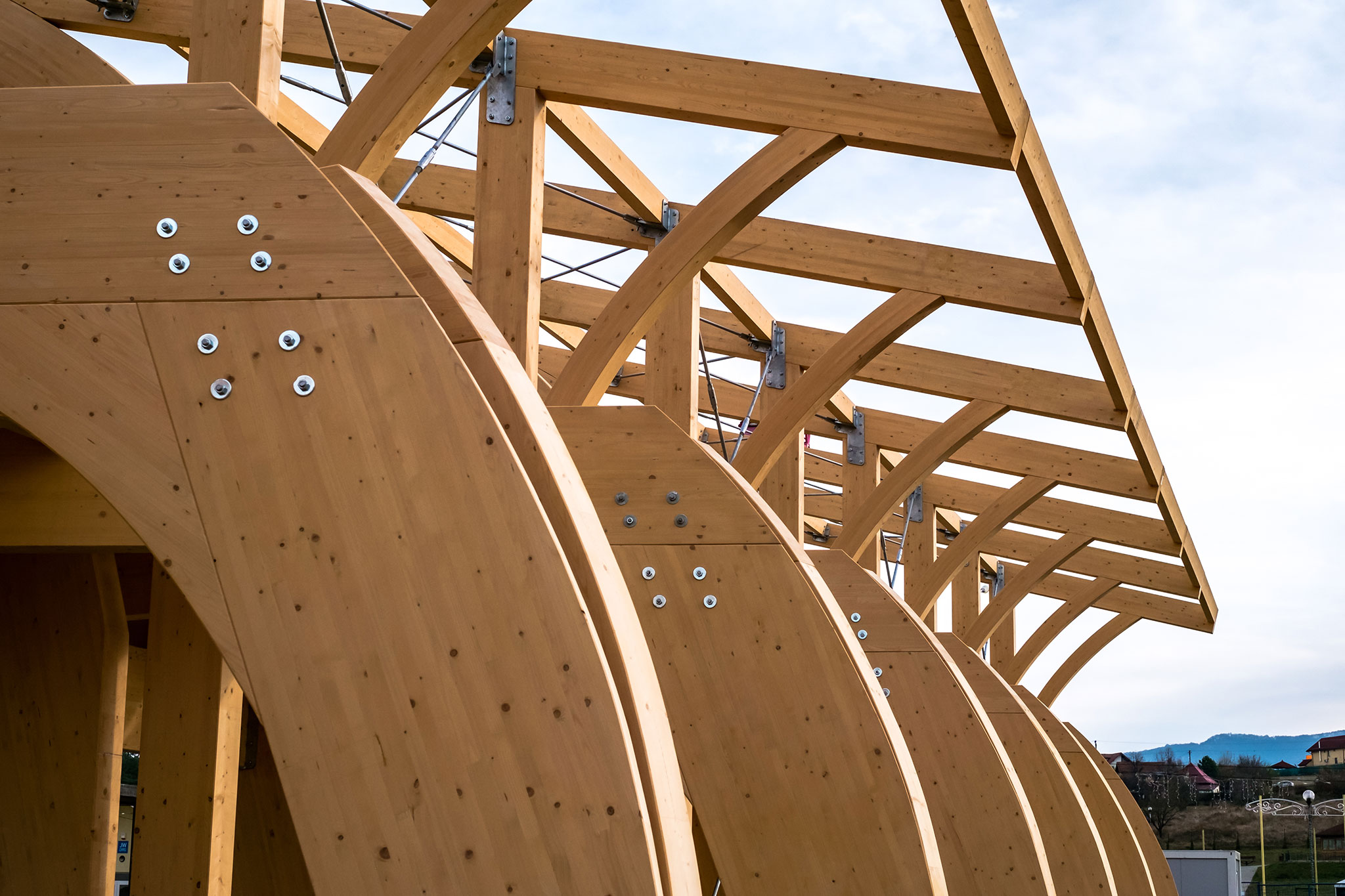Glued laminated timber (glulam)
What is it?
Glued laminated timber, also known as glulam, was patented by a German carpenter, Otto Hetzer, in 1906, although there is evidence of the physical principle of juxtaposition of boards (lamellae) since the 18th century. Glulam is normally made from softwoods lamellae, classified and selected, juxtaposed, with the grain laying parallel to layers above and below, strongly bonded by appropriate adhesive. This juxtaposition of lamellae (boards) can be vertical (beams) or horizontal (beams or slabs).
It is undoubtedly the principal engineered wood product for structural applications. It enables large-sized and even curved items, with enormous freedom of shapes! With these large items, the limitation is merely linked to transport. This fosters the optimal use of the raw material, timber, by combining boards of different strength classes. It enables improved drying and enhanced quality control. Glulam is a light and strong material (16 times lighter than steel and 5 times lighter than concrete), showing good resistance to chemically aggressive environments and excellent fire resistance performance. Glulam constructions are fast to assemble on-site and radiate a supremely natural beauty.
